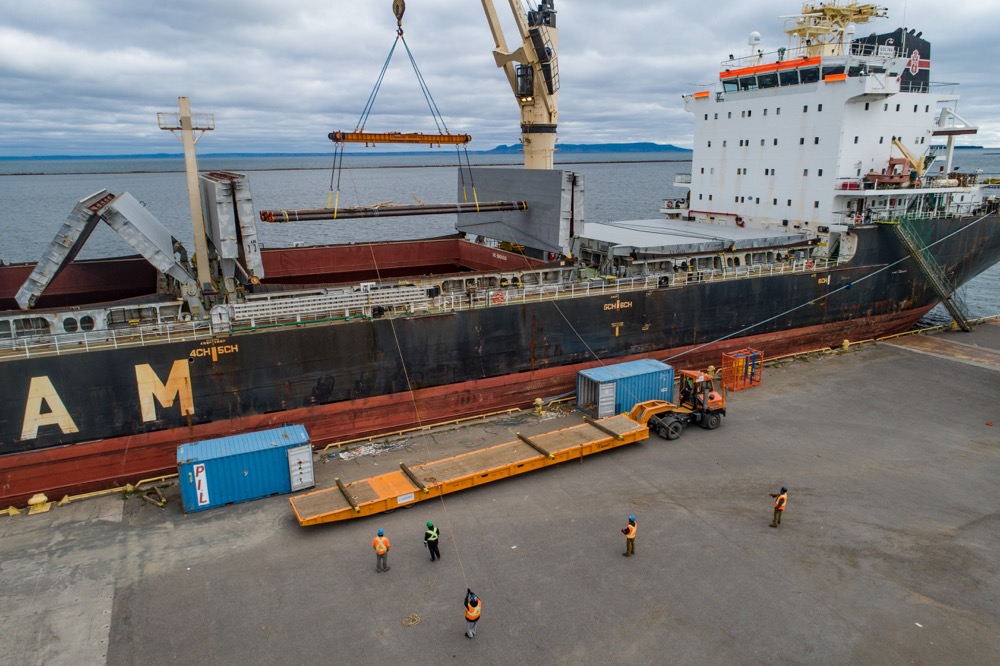Increased diversity in cargo shipments handled at the Port of Thunder Bay to end October is helping to offset the decrease in overall shipments resulting from lower volumes of Prairie grain this season. While overall shipments at 6.4 million tonnes are 6% lower than the 5-year average and 17% lower than last year, the outlook is strong for several emerging commodities and for the remainder of the shipping season. Total grain to end October amounted to 5.4 million tonnes versus the year-earlier 6.9 million tonnes.
The Port’s general cargo facility, Keefer Terminal, is experiencing a 25-year high in cargo shipments. Built sixty years ago to serve the domestic package-freight industry, Keefer Terminal has been re-established by the Port as a hub for general and breakbulk cargo inbound to Western Canada.
In October, nearly 8,000 metric tonnes of European steel pipe were discharged at Keefer, where the cargo is stored in expansive laydown areas and then trucked to Alberta. Keefer will receive its third shipment of phosphate fertilizer, also destined for Western Canada, late in the season. Import steel and phosphate fertilizer are growing opportunities for the port. Export shipments of Canadian-mined potash are also on the rise. Total general cargo to end October was 30,543 tonnes versus 16,885 tonnes a year earlier.
October was the strongest month so far this year for potash shipments, which sit 67% above last year’s tally and 34% above the 5-year average. Most of the potash is directly exported via saltie to Europe. All three operating Western Canadian Grain Ports have experienced reductions in grain throughput this harvest season.
According to the Quorum Corporation Grain Monitor, the year-over-year decrease of grain railcar unloads in Thunder Bay is 29%, compared with decreases of 28% in Vancouver, and 64% in Prince Rupert. Grain shipments are expected to be closer to average in Thunder Bay for the remainder of the shipping season . (Photo TBPA)








